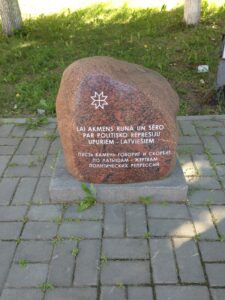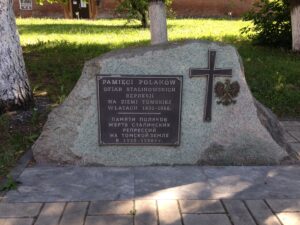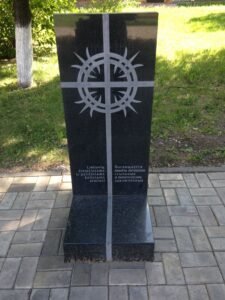Historians tell stories. That’s our job, or part of it. Unlike the novelist or filmmaker, however, historians are limited–at least in part–by available evidence on a given topic. We cannot, in other words, just make things up. This limitation aside, however, there remain almost countless ways that historians can tell stories, and almost countless methods by which historians access the past. For the “44 Lenin Avenue” project, I am trying a new type of storytelling, at least for me: a series of small stories, almost vignettes, of events that all took place within the same building, but in different eras. The story of the building, then, is the narrative thread that holds together the other stories (murder in 1909, Solzhenitsyn’s visit to the building in 1994). While unusual for academic publishing, this type of storytelling is not unique. Here’s a list of a few influences and/or similar types of storytelling projects:
- Timothy Brook, Vermeer’s Hat. In this book, Brook examines the increasingly globalized world of the 17th century through a series of paintings by the Dutch painter Jan Vermeer, all painted in his studio in the town of Delft. Brook uses these paintings as windows into broader currents of global history. The paintings are thus a fun and useful narrative device to tell stories as far apart as a shipwreck of a Portuguese vessel off the coast of China, to Champlain’s search for a waterway that would take him through North America.
- Ivo Andric, The Bridge on the Drina. Andric’s book is historical fiction, but follows the history of Bosnia and the Balkans from the 16th century to World War I by examining the life of the bridge, and the stories of those who were impacted by it. Andric paints a vivid picture of the importance of place, both how a place can affect the broader world, and how the broader world affects that particular place.
- Francois Girard, dir., “The Red Violin.” I really loved this movie when it came out in 1998, a series of vignettes all based around the many owners of a mysterious red violin. Like The Bridge on the Drina, this story spans several centuries.
- In the end, my method of storytelling in “44 Lenin Avenue” will hopefully resemble a layered microhistory, in which the story of the building is one such microhistory, and each event is its own microhistory. In this I am influenced both by Natalie Zemon Davis‘s classic, The Return of Martin Guerre, as well as Jill Lepore’s definition of microhistory as contrasted with biography (below), although I make no claim to even a tenth of their storytelling abilities.
If biography is largely founded on a belief in the singularity and significance of an individual’s life and his contribution to history, microhistory is founded upon almost the opposite assumption: however singular a person’s life may be, the value of examining it lies not in its uniqueness, but in its exemplariness, in how that individual’s life serves as an allegory for broader issues affecting the culture as a whole
– Jill Lepore, “Historians Who Love Too Much: Reflections on Microhistory and Biography,” Journal of American History 88.1 (2001): 129-144, quotation on page 133.
 (Image from the Memorial Museum “NKVD Remand Prison”
(Image from the Memorial Museum “NKVD Remand Prison” 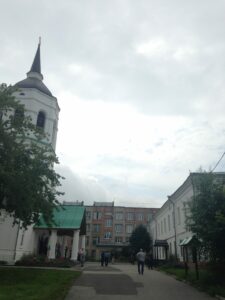



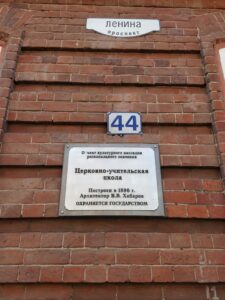

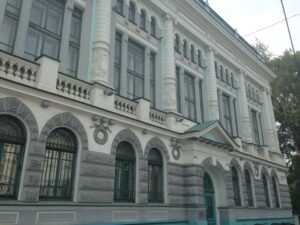 For instance, A. P. Tolochko shows that Tomsk gubernaia had by far the largest number of pro-monarchist organizations in Siberia, and that the city of Tomsk itself likely had the largest number of individual members. If at the end of 1906, beginning of 1907 the Tobol’sk region had 1 such organization, the Tomsk region had 11, despite very similar economic situations in both parts of Western Siberia. [see A. P. Tolochko, “Territorial’noe razmeshchenie, chislennost’ i sotsial’nyi sostav chernosotennykh organizatsii v sibiri v nachal’nik XX v,” in Chelovok v Istorii, edited A. N. Zheravina et. al. (Tomsk: Tomsk University Press, 1999), 198-206.]
For instance, A. P. Tolochko shows that Tomsk gubernaia had by far the largest number of pro-monarchist organizations in Siberia, and that the city of Tomsk itself likely had the largest number of individual members. If at the end of 1906, beginning of 1907 the Tobol’sk region had 1 such organization, the Tomsk region had 11, despite very similar economic situations in both parts of Western Siberia. [see A. P. Tolochko, “Territorial’noe razmeshchenie, chislennost’ i sotsial’nyi sostav chernosotennykh organizatsii v sibiri v nachal’nik XX v,” in Chelovok v Istorii, edited A. N. Zheravina et. al. (Tomsk: Tomsk University Press, 1999), 198-206.] 


